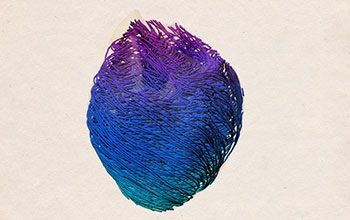Multimedia Gallery
"Alya Red: A Computational Heart"
"Alya Red: A Computational Heart," by Guillermo Marin, Fernando M. Cucchietti, Mariano Vázquez, Carlos Tripiana, Guillaume Houzeaux, Ruth Arís, Pierre Lafortune and Jazmin Aguado-Sierra, Barcelona Supercomputing Center.
This image is an artistic rendering of Alya Red, a new computer model of the heart that marries modern medical imaging techniques with high-powered computing. Based on MRI data, each colored strand represents linked cardiac muscle cells that transmit electrical current and trigger a model human heartbeat. Despite centuries of study, scientists are still largely baffled by the heart's complex electrical choreography, says physicist Fernando Cucchietti, who helped produce the video. The most challenging part was to get the heart fibers in the image to move in a realistic way, Cucchietti says. To view the full video, go to the 2012 winners page on the Vizzies Special Report website and search for "Alya Red" and then click the "video" link.
This image won first place and people's choice in the video (Screenshots) category of the 2012 Visualization Challenge, now called the Vizzies, a long-running, annual competition co-sponsored by the National Science Foundation (NSF) and Popular Science magazine. [The competition was formerly named the International Science & Engineering Visualization Challenge (SciVis) and was previously co-sponsored with AAAS' journal Science.] The competition aims to recognize some of the most beautiful visualizations from the worlds of science and engineering and awards prizes in five categories: photography, video, illustration, posters & graphics and interactives.
To learn more about the competition and view all the winning entries, past and present, see the NSF Special Report The VIZZIES: Visualization Challenge. (Date of Image: August 2012)
Credit: Credit: Guillermo Marin, Fernando M. Cucchietti, Mariano Vázquez, Carlos Tripiana, Guillaume Houzeaux, Ruth Arís, Pierre Lafortune and Jazmin Aguado-Sierra, Barcelona Supercomputing Center
See other images like this on your iPhone or iPad download NSF Science Zone on the Apple App Store.
Images and other media in the National Science Foundation Multimedia Gallery are available for use in print and electronic material by NSF employees, members of the media, university staff, teachers and the general public. All media in the gallery are intended for personal, educational and nonprofit/non-commercial use only.
Images credited to the National Science Foundation, a federal agency, are in the public domain. The images were created by employees of the United States Government as part of their official duties or prepared by contractors as "works for hire" for NSF. You may freely use NSF-credited images and, at your discretion, credit NSF with a "Courtesy: National Science Foundation" notation.
Additional information about general usage can be found in Conditions.
Also Available:
Download the high-resolution JPG version of the image. (1.1 MB)
Use your mouse to right-click (Mac users may need to Ctrl-click) the link above and choose the option that will save the file or target to your computer.



